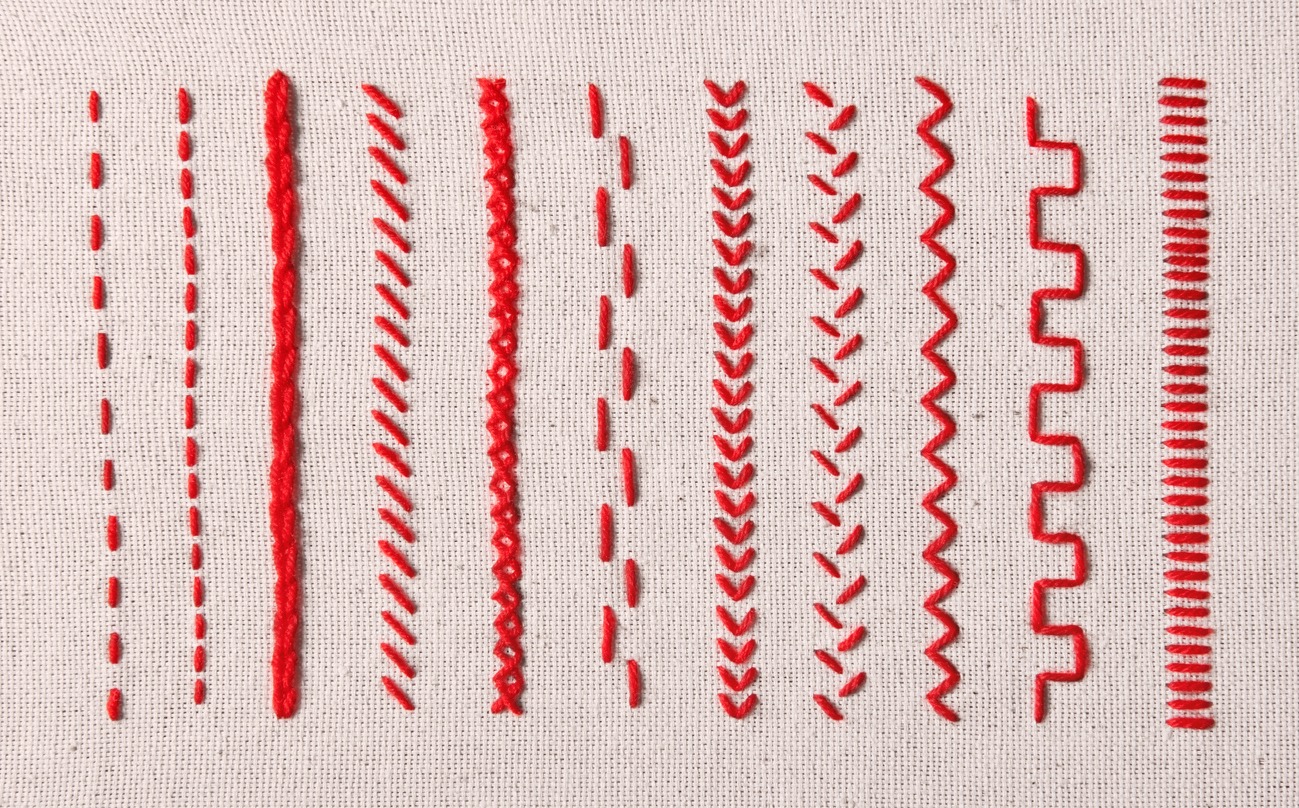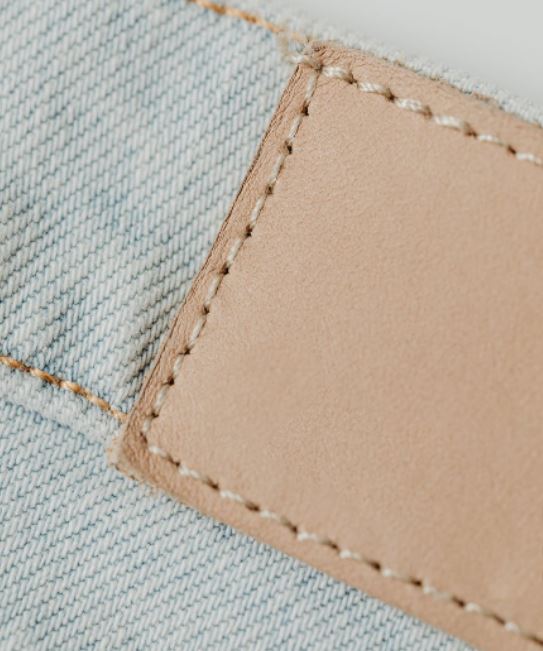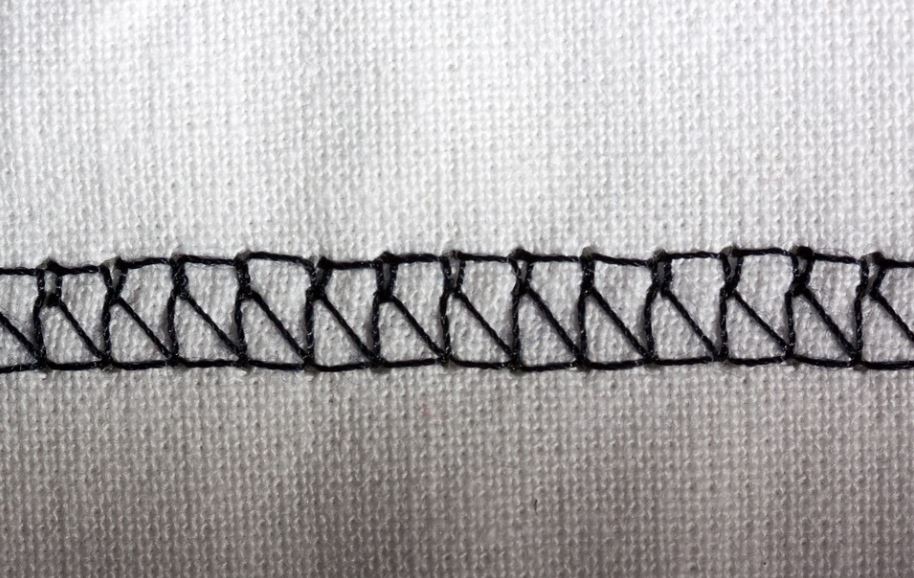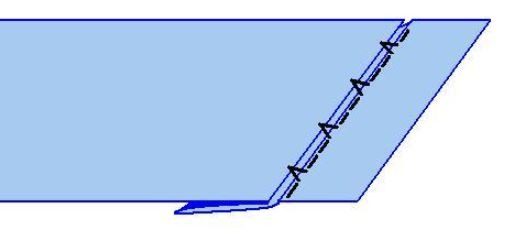It’s not odd to be drawn to a sewing machine with all the bells and whistles you can afford when shopping for one. The more complicated (or expensive) the sewing machine, the more stitch options it will have. Now that you have your stitches, it’s time to learn how to use them.
It’s always an excellent idea to check your stitching on scrap fabric, irrespective of the type of stitches. If you’re stitching a continuous neckline on a cloth, for example, you’ll want to ensure the stitches overlap properly at the end.
Testing the stitching on similar lengths of scrap fabric is the best way to ensure that the stitching is properly placed. It’s also a fantastic idea to learn the fundamentals of machine embroidery so you can produce the best stitching possible.
So if you’re curious about your Brother or Singer sewing machine stitches, here are the most important machine stitches to be aware of when using a sewing machine.
Straight Stitch
A straight stitch is the most common stitch used in almost every construction sewing. A straight stitch is a strong stitch with a thread on the bottom (the bobbin thread) and a thread on top (the upper thread), the threads interlocking at regular intervals.
You can change the length of a straight stitch. A small, short stitch is tight and hard to remove, whereas a longer stitch is easier to remove. A basting stitch is the longest straight stitch that can be made and is intended to be removed.
Extending the stitch’s length usually solves the problem when a straight stitch puckers your fabric. You can adjust the tension on the sewing machine’s upper thread via a screw on the bobbin case. Before making any adjustments, always consult your sewing machine’s manual.
When sewing a straight stitch, you can switch the needle position on your sewing machine. You can change the guide you’re using by changing the needle position to keep sewing straight lines precisely where you want them. The amount you can alter the needle position depends on the features of your sewing machine.
Machines with zigzag capabilities have at least three needle positions. The bare minimum of needle positions would be left, right, and center.
Reverse Straight Stitch (Anchor Stitch)
Most modern sewing machines include a reverse button, which allows you to sew in reverse while pressing it. You can use it with a zigzag or straight stitch, and your machine will sew the stitch backward.
A reverse stitch is commonly used as an anchor stitch at the beginning and end of a sewing project. When you first start sewing, you are eager to get started, but taking a simple caution at the start will ensure that you do not have unraveling seams.
To render this stitch, straight stitch approximately three stitches forward, then switch to reverse stitching and head back three stitches. Return to your sewing and continue. This is how the stitches are held in place. When you’re finished stitching, do the same thing.
Another method is to use a zero-length stitch and sew three stitches in the same location. Straight stitches will be used as anchoring stitches with a zigzag stitch.
Zigzag Stitch
A zigzag stitch resembles a long row of the letter W. A zigzag stitch is most commonly used to enclose raw corners as a seam finish. As a seam finish, one edge is sewn off the fabric’s edge so that the fabric threads are enclosed inside the threads of the zigzag stitch, preventing fraying.
You can adjust a zigzag stitch’s width and length. Slightly shorter stitch lengths result in a narrower W formation. The stitch width determines the width of the W formation.
A zigzag stitch is used as a stretch stitch when no other options are available. With a knit or stretchy fabric, sewing a seam with narrow zigzag stitches instead of wide zigzag stitches allows the stitching to stretch.
Manually made buttonholes are made with a zigzag stitch in various stitch lengths and widths. The bar tacks are sewn with a wide stitch and a shortened stitch length on each end. The buttonholes’ sides are made with a short stitch length and a narrow stitch width.
Stretch Stitch
A stretch stitch, a narrow zigzag stitch, is used to sew knit fabrics together. A straight stitch will tear under the stretch of these fabrics, whereas a zigzag stitch stretches with the fabric. It’s also known as the lightning stitch or the elastic stitch.
It’s also used to sew elastic and fabric together. This is an excellent stitch for mending fabric tears.
You must keep the tattered fabric together and stitch the pieces together.
Coverstitch
This is common stitching found in ready-to-wear garments; parallel lines of straight machine stitching on the fabric’s face but zigzag stitching on the back. A coverstitch machine was used to make this. You can achieve this effect on a regular sewing machine by using double needles and twin stitching.
Blind Stitch
Blind stitches are not available on all sewing machines, but they are common stitches. A blind stitch is often used to stitch hems in place with as little visible stitching as possible. This stitch can save you numerous hours of hand sewing.
Your sewing machine may have a stretch blind stitch and a straight blind stitch. The fabric you’re working with will determine which type of blind stitch you must use.
A stretch blind stitch would be used on a stretchy fabric, while you would use a straight blind stitch on a non-stretch or woven fabric. The best guide on sewing a blind stitch is the manual for your sewing machine.
Decorative Stitches
Consider yourself fortunate if you have a sewing machine with various decorative stitches. You are most likely one of only a few people who own sewing machines with decorative stitches.
However, you may be ignoring these stitches due to a lack of understanding about their power. You can beautifully embellish almost any sewing project with these stitches.
You need to be patient and use a strong thread. Most of the clothes sewn are made with difficult-to-sew fabrics, which necessitates decorative stitches. With a few precautions, you can bypass the frustrations that most people experience with these stitches.




